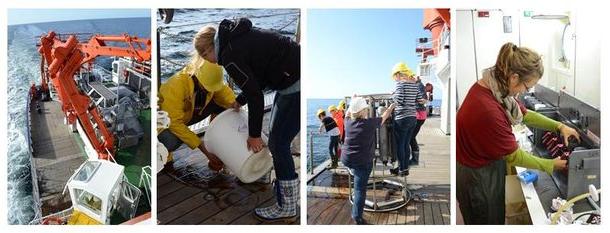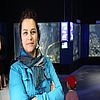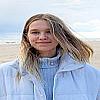Jellyfish Ecology

Overview
We are interested in marine foodweb where jellyfish take over the top predator position or build a bloom. Particularly we are after evidences to find out how jellyfish manage to get around the oceans very successfully. Main themes that run through many of our projects range from small scale eco-physiology of jellyfish to meso-scale experiments on food web interactions under different environmental conditions. Please visit our jellyfish blog!
Team
Grants
- 'GoJelly – A gelatinous solution to plastic pollution”, funded by the European Union’s Horizon 2020 research and innovation programme under grant agreement No 774499 (Total volume 6 million €/ ~1 million € GEOMAR); 2018 - 2021
- 'Ijelly', Implementation of a jellyfish mucus-based particle filter- a biological system to reduce water contamination (10 K€), funded by Helmholtz Validierungsfonds; 2017
- "Flow2Vortex" ein innovatives Verfahren um Plankton zu kultivieren, 8 K€), funded by Helmholtz Validierungsfonds; 2016 - 2017
- ‘Angewandte Quallen Forschung’, funded by private sector, Kiel (12K€); 2016-2017
- ‘Ecological and socio-economic approaches in jellyfish research and industries’, funded by Deutsch-Norwegisches Studienzentrum (3475€); 2016
- ‘The End of the Dead-end’, Sino-German fellowship project
- ‘The role of borders’, DAAD exchange program with USA (5k€); 2012-2013
- ‘Interactions between native and invasive gelatinous zooplankton within the Baltic Sea food web- INIGEL’, DFG project, financing of the own position (214150k€); 2010-2013
- ‘Identification, Abundance, Diversity and Distribution Pattern of Fish Larvae in Khark and Kharko Coralline Islands’, DFG research fellowship project (8 k€); 2010-2013
- ‘Die Invasion der räuberischen Rippenqualle Mnemiopsis leidyi in der Ostsee’, Landesamt für Natur und Umwelt des Landes Schleswig Holstein project, Germany (10k€); 2008
- Co-PI of Interdisciplinary Project Group: ‘Tracking the invasion of the lobate ctenophore Mnemiopsis leidyi during its first occurrence in Kiel Bight from 2007’, IfM-GEOMAR, Germany (10k€); 2008
Papers
- Katharina Tissy Bading, Sarah Kaehlert, Xupeng Chi, Cornelia Jaspersc, Mark Q. Martindale, and Jamileh Javidpour, Food availability drives plastic self-repair response in a basal metazoan- case study on the ctenophore Mnemiopsis leidyi A. Agassiz 1865, Scientific Reports, final edit.
- Véronique Mertens;, Bernd Christiansen, Jamileh Javidpour, Uwe Piatkowski, Oscar Puebla, Henk-Jan Hoving, Trophic ecology of the orangeback squid Sthenoteuthis pteropus (Steenstrup 1855) (Mollusca, Ommastrephidae) in the eastern tropical Atlantic, accepted with minor revision by PLOS ONE.
- A. Lischka, T. Lacoue-Labarthe, H. J. T. Hoving, J. Javidpour, V. Merten, C. Churlaud, P. Bustamante, High cadmium and mercury concentrations in the tissue of the orange-back flying squid, Sthenoteuthis pteropus, from the tropical Eastern Atlantic, under Rev by the “Science of the Total Environment”.
- Eduardo Ramirez-Romero, Juan Carlos Molinero, Matthias Paulsen, Jamileh Javidpour, Catriona Clemmesen, Ulrich Sommer, Modeling the top-down control in the plankton community by the scyphozoan Aurelia aurita: application in a neritic ecosystem (Kiel Fjord), accepted with major revision by MEPS.
- Jaspers et al. Ocean current connectivity propelling secondary spread of a marine invader across western Eurasia, under Rev. by Global Ecology and Biogeography.
Alumni
- Veronique Mertens (Co-supervision with Dr. Henk-Jan Hoving)
- Lea Kraienhemk
- Katharina Bading
- Sarah Kaehlert
- Mathias Hilbich
- Ashlie Nicole Cipriano
- D. Sarpe
- P. Rzepka
- Nora Wissner








